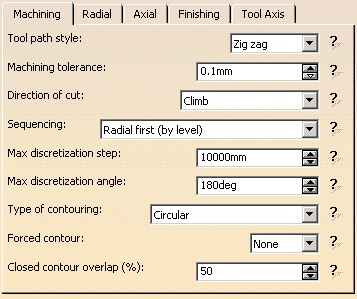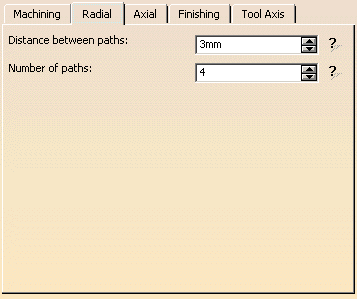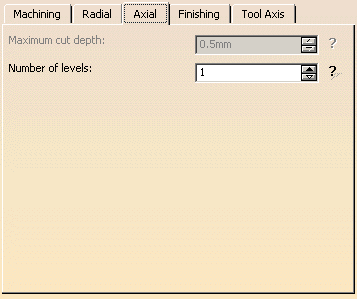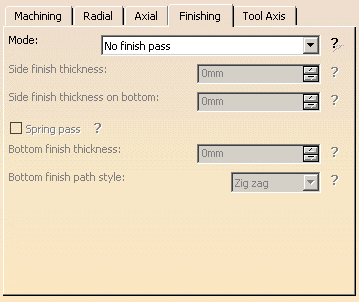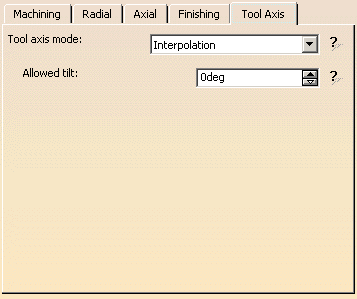 |
This task shows how to insert a 'Between curve and part'
Multi-Axis Curve Machining operation
in the program.
To create the operation you must define:
|
 |
|
 |
Open the
MultiAxisMilling01.CATPart document, then select Machining > Advanced Machining from the Start menu.
Make the Manufacturing Program current in the specification tree. |
 |
-
Select the Multi-Axis Curve Machining icon
 . .
The Multi-Axis Curve Machining dialog box appears directly at
the Geometry tab page
 . .
This page includes a sensitive icon to help you specify the geometry to
be machined.
Set the Curve machining mode to Between curve and part.
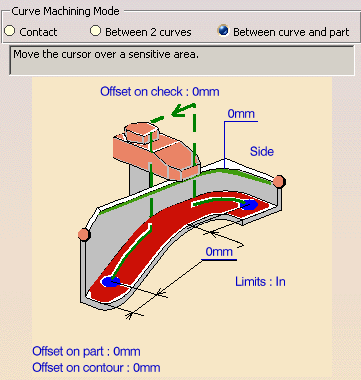
|
 |
The top guiding curve and part bottom in the icon are
colored red indicating
that this geometry is required for defining the operation.
All other geometry is optional.
Set the Curve Machining type to Side to drive the
tool flank. |
| |
-
Click the red bottom in the icon, then select the 6
faces in the 3D window as shown in the figure.
-
Click the top guiding curve in the icon, then select the
6 edges in the 3D window as shown in the figure.
The part and guide elements of the icon are now colored green indicating
that this geometry is now defined.
These are also indicated on the part.
-
Select the Strategy tab
page  . You
can then use the tab pages to set parameters for: . You
can then use the tab pages to set parameters for:
|
|
-
Radial (set Radial strategy with Distance between paths = 3mm
and Number of paths = 4)
|
|
|
|
|
|
|
-
Click the tool axis arrow (A) in the
sensitive icon,
then specify the reference tool axis direction for the operation.
You can do this by selecting a surface. In this case the surface normal
is used.
-
Click one of the red interpolation axes in the sensitive
icon, then select a position for the first interpolation axis.
The axis is visualized by means of an arrow (I.1).
You can then specify the orientation of this axis using the
Interpolation Axis dialog box that appears.
If you select a surface, the surface normal is used.
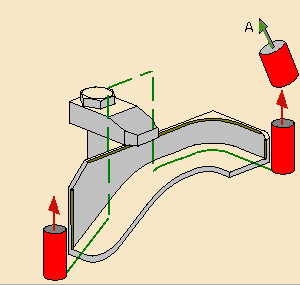
-
Select one or more positions for other interpolation
axes and specify their orientations in the same way.
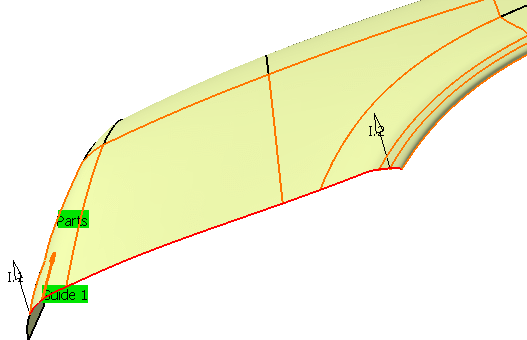
|
| |
 |
A tool is proposed by default when you want to create a machining
operation.
If the proposed tool is not suitable, just select the
Tool tab page
 to specify the tool you want to use.
to specify the tool you want to use.
This is described in
Edit the Tool
of an Operation. |
| |
-
Select the Feeds and Speeds
tab page  to
specify the
feedrates and spindle speeds for the operation. to
specify the
feedrates and spindle speeds for the operation.
-
Check the validity of the operation by
replaying
the tool path.
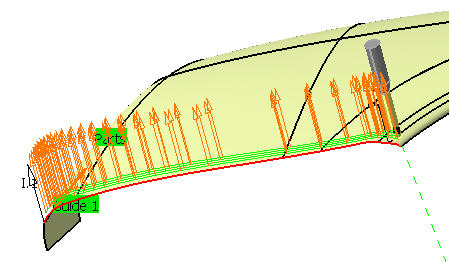
|
 |
You can add approach and retract motions to the operation
in the Macros tab page
 . .
This is described in
Define Macros
of an Operation. |
|
-
Click OK to create the operation.
|
|
 |

